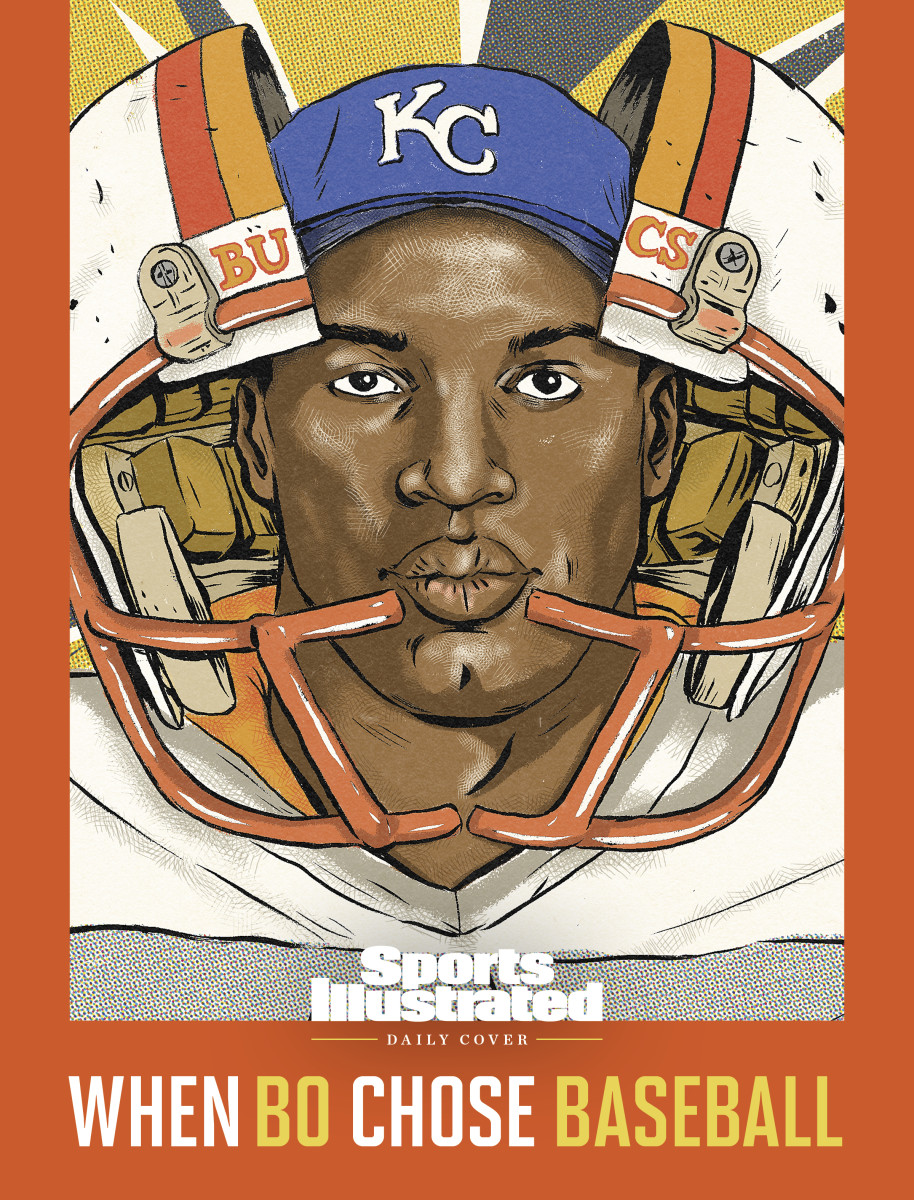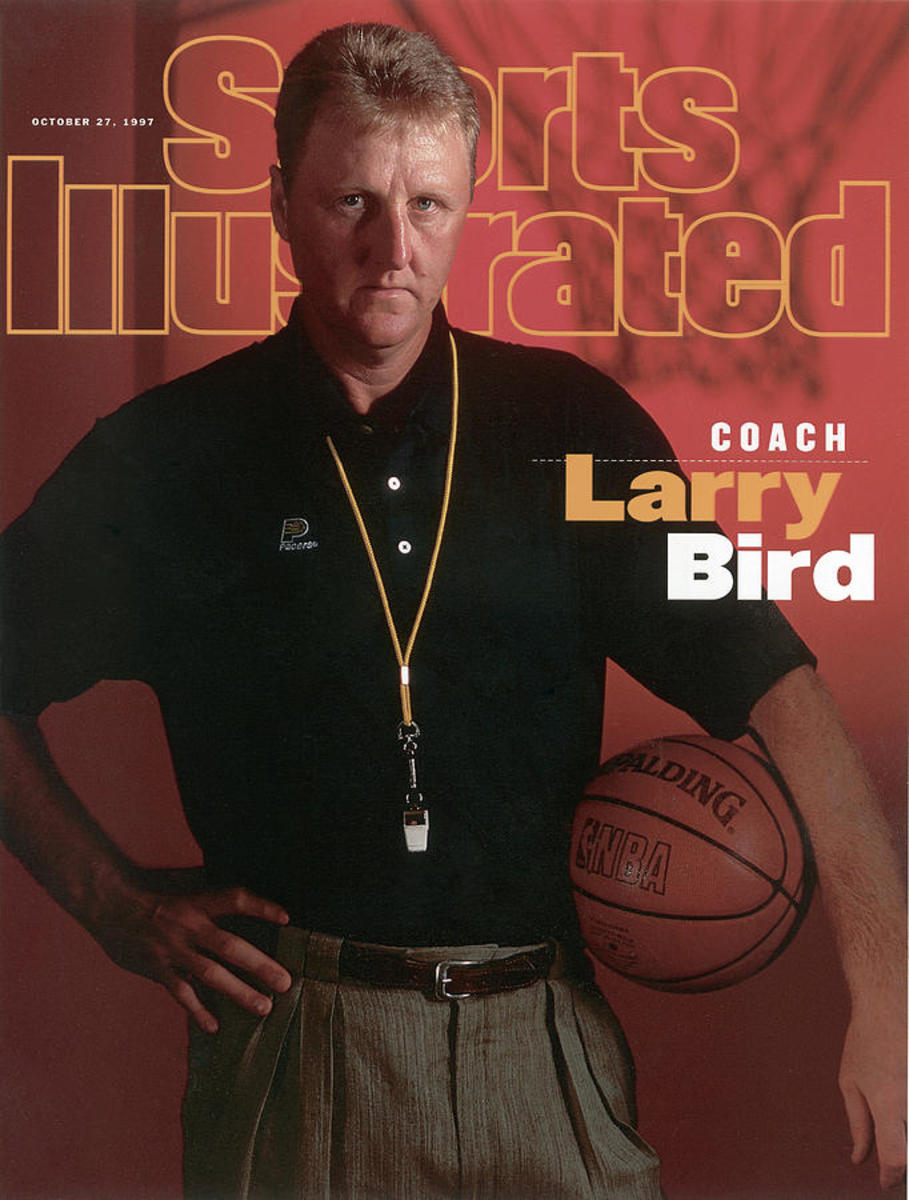SI:AM | It Just Keeps Getting Worse for the Lakers
Good morning, I’m Dan Gartland. What on earth is happening with the Lakers?
In today’s SI:AM:
If you're reading this on SI.com, you can sign up to get this free newsletter in your inbox each weekday at SI.com/newsletters.
The Lakers are a mess
There are three winless teams remaining in the NBA: the Magic, who held the No. 1 pick in this year’s draft; the Kings, who haven’t made the playoffs in 16 years; and the Lakers, who employ three future Hall of Famers.
Los Angeles lost 110–99 to the Nuggets last night in Denver to fall to 0–4 on the season. Chris Mannix wrote yesterday before the game that “it’s not hyperbole to suggest the Lakers’ season is in danger of unraveling.” So what are we to make of this team after yet another loss?
Mannix’s column focuses mainly on the struggles of Russell Westbrook, and rightfully so. After his poor play last season, his future with the team was called into question during the offseason. When the Lakers opted not to trade him, the dominant story line of the Lakers’ season became how they would deal with a diminished Westbrook. He’s been terrible, but the Lakers can’t blame last night’s loss on him.
Westbrook sat out the Denver game with a hamstring injury. And while LeBron James (19 points, nine assists, seven rebounds) and Anthony Davis (22 points, 14 rebounds, three steals) put up decent numbers, the loss showed again that the Lakers’ supporting cast just isn’t cutting it. Lonnie Walker IV was the only other player with double-digit points (he scored 15). James wasn’t entirely blameless, either, having turned the ball over eight times.
“I wasn’t aggressive enough in a lot of my turnovers,” James told reporters. “I was coming off a lot of screens, looking to pass, get guys involved and I wasn’t aggressive enough. Those were careless turnovers on my part.”
The biggest issue, though, as it has been in every game, was shooting. James said after the season-opening loss to the Warriors that the Lakers are “not a team that’s constructed of great shooting” and they’ve continued to prove him right every night. They shot .444 from the field and .267 from three last night, solidifying their spot as one of the worst shooting teams in the NBA. Their .416 team shooting percentage is second-worst in the league ahead of only the Thunder, and their .223 three-point percentage is dead last by a wide margin.
If the Lakers want to solve their three biggest problems—the dead weight of Westbrook, the lack of depth behind James and Davis and their poor shooting—there’s one simple solution staring them in the face. The Pacers reportedly offered the Lakers a trade during the offseason that would have sent Myles Turner and Buddy Hield to Los Angeles in exchange for Westbrook and two first-round draft picks (2027 and ’29). If the Pacers are still interested in that trade—which they should be, since they appear destined for the Victor Wembanyama sweepstakes—L.A. GM Rob Pelinka should make it as soon as possible. Here’s what Mannix thinks of the proposed deal:
Is it a blockbuster? No. Hield and Turner are flawed players. But Hield is a career 43% three-point shooter. Turner shoots 35% from 3 and is the kind of shot-blocking center that should slide in nicely alongside Anthony Davis. The Lakers, the NBA’s worst three-point shooting team, would immediately become a better one.
Is it a steep price? Of course. Who knows what the state of the Lakers will be in ’27, when James is gone. Or in ’29, when the second pick would convey. Plus the trade—specifically the $19.2 million Hield is owed next season—would wipe out a chunk of L.A.’s cap flexibility next summer.
Whatever the Lakers do, they need to do it soon. Westbrook is a liability and has no future on this team. The Lakers need to ship him elsewhere before they fall into an even deeper hole. But even then, it’s no guarantee that whichever players they receive in return will improve the team enough to make it a playoff contender.
The best of Sports Illustrated

Today’s Daily Cover is an excerpt from Jeff Pearlman’s new book about Bo Jackson:
Sure, Bo Jackson was an excellent collegiate ballplayer with all sorts of talents. But clearly his future was in the NFL. It had to be. He was the reigning Heisman Trophy winner and the best running back prospect to emerge from the collegiate ranks since Orenthal James Simpson departed Southern Cal in 1969. Even though the stingy Tampa Bay Buccaneers held the first pick in the upcoming draft, there was no way the franchise would let a phenomenon like Jackson slip through its fingers.
Conor Orr will be grading all the big NFL trades before the deadline on Tuesday, including yesterday’s deal that sent Robert Quinn to the Eagles. … Orr also has a list of nine trades he thinks teams should make. … Here is what the Phillies can do to upset the Astros, according to Will Laws. … Chris Herring breaks down how the Jazz have gotten off to their surprisingly hot start. … Jonathan Wilson explains why Barcelona’s early Champions League exit is particularly damaging for the club.
Around the sports world
Bears pass rusher Roquan Smith had an emotional reaction after learning during a press conference that Robert Quinn had been traded. … Giants offensive lineman Nick Gates is ready to return after a gruesome leg injury that required seven surgeries. … Matt Ryan addressed the Colts’ decision to bench him for the first time. … Cardinals pitcher Adam Wainwright will reportedly return to the team next season. … Damian Lillard left last night’s game with a calf injury. … The grind never stops for Russell Wilson, who said he spent four hours working out on the Broncos’ flight to London.
Super Bowl reservation prices for the Seahawks jumped 105% after Seattle’s emphatic win over the Chargers, according to SI Tickets.
The top five...
… things I saw yesterday:
5. The individual effort by the Ducks’ Troy Terry on this goal.
4. The dramatic Champions Leagues finishes for Tottenham and Atlético Madrid.
3. Giannis Antetokounmpo’s 43-point double double.
2. Steve Nash’s ejection. I’ve never seen him get that heated before.
1. Jean Segura boarding the Phillies’ flight to Houston dressed in full uniform.
SIQ
On this day in 2004, the Red Sox finished off a sweep of the Cardinals to win their first World Series since 1918. The win came on the heels of the Patriots’ victory in Super Bowl XXXVIII. Before Boston, what was the last city to have a Super Bowl champion and World Series champion in the same year?
- Pittsburgh
- New York
- Oakland
- Los Angeles
Yesterday’s SIQ: Who was named MVP of the 2005 World Series when the White Sox beat the Astros?
- Paul Konerko
- Mark Buehrle
- Aaron Rowand
- Jermaine Dye
Answer: Jermaine Dye. He had a team-best seven hits in 16 at bats during the series (a .438 batting average), including a two-out RBI single in the eighth inning that proved to be the game-winner in Chicago’s 1–0 Game 4 victory.
If you had to pick an MVP for the entire postseason, though, it would probably have to be Paul Konerko. In Game 2 of the World Series, with Chicago trailing 4–2 with two outs in the seventh, Konerko hit a grand slam off Chad Qualls. It was one of five homers he hit that postseason.
The White Sox tore through the competition that October, winning 11 of their 12 games. The only loss came in Game 1 of the ALCS against the Angels. (That series was also remarkable because in all of Chicago’s four wins, the starting pitcher threw a complete game.)
They snapped a World Series drought even longer than the Red Sox’ (Chicago’s South Side club hadn’t won since 1917) and joined the diverse list of champions that followed the end the Yankees’ recent dynasty, as Tom Verducci wrote after the series:
That the Sox, largely unloved and unremarkable for 88 years, would play in the World Series against the similarly vanilla Astros, who had never been to the Series in their previous 43 seasons of existence, signaled the death of baseball's October elitism. The Fall Classic has become a model of democracy.
It’s not just that baseball will crown as champion its sixth different franchise in six years, something the sport hasn’t done since 1982–90 (when nine different teams won), the NBA hasn’t done since 1975–80 and the NFL hasn’t done since 1968–73. It’s not just that the past 10 World Series berths have been filled by nine different teams, including six that had combined for zero championships since 1954 (Diamondbacks, Angels, Giants, Red Sox, White Sox and Astros).
That isn’t the case this year, with the Astros back in the World Series for the fourth time in six years.
From the Vault: Oct. 27, 1997

In the mid ’90s, after he had retired from the NBA, Larry Bird was getting restless. Since retiring as a player after the ’91–92 season, Bird had worked as a special assistant to Celtics owner Paul Gaston but when Bird realized that position wasn’t sustainable in the long term, he wanted to find another way to stay involved in the game. Enter the Pacers, who hired Bird to be their coach before the 1997–98 season. Here’s how Jackie MacMullan described how that marriage came about:
The downside of Bird’s alliance with the Pacers was his break with the Celtics. For the past two years his frustration with the Boston franchise had been building. He made suggestions in team meetings that were ignored. Deals he thought were foolish went through. The Celtics, he felt, were going in the wrong direction. Team owner Gaston maintains Bird could have been involved with the Celtics in any capacity he wanted, but Bird says he never believed that. “[The owners] had already made up their mind what they wanted,” he says, “and it wasn’t me.”
Last spring Gaston asked Bird to make up a list of coaches to succeed M.L. Carr. Bird submitted the names of Kentucky coach Rick Pitino (who eventually got the job) and Pacers coach Larry Brown (now with the 76ers), but his first choice was Kansas coach Roy Williams.
[...]
Gaston examined the list and settled on Pitino. The only way Pitino would forsake Kentucky for Boston was if he was given a substantial financial package and total control of basketball decisions. That would leave no role for Bird. Pitino publicly declared he would not be interested in the Boston job unless Bird was involved in some capacity. Bird says by then he had already realized his time in Boston was up, and he told Pitino that. “I wasn’t about to let someone else make the decisions and have me take the blame for them,” Bird says. “That’s how it was being set up. I think Paul Gaston sort of wanted me there, but he didn’t want me to have control.”
Meanwhile, when Bird contacted Indiana last April to ask permission to speak with Brown about Boston’s vacancy, the Pacers, in turn, asked permission to speak to Bird about their potential coaching opening. When he said he’d consider it, Indiana’s owners, Mel and Herb Simon, immediately decided to do whatever it took to land Bird. For his part, Bird quickly determined the only place he would coach was Indiana. It was home.
MacMullan’s story explores Bird’s relationship with Indiana and how returning to his home state, some two-and-a-half hours from where he grew up in French Lick, represented an opportunity to reconnect with his roots after his messy breakup with the Celtics.
Bird’s coaching job wasn’t merely ceremonial, either. He was damn good at his new job. The Pacers went 58–24 in his first year in charge, the second best record in the East. They advanced at least as far as the conference finals in each of his three seasons in charge, losing to the Lakers in the 2000 Finals. After the Finals loss, Bird was done. He had said repeatedly that he’d only coach for three seasons—and he kept his word.
Check out more of SI’s archives and historic images at vault.si.com.
Sports Illustrated may receive compensation for some links to products and services on this website.
